Some of the links in this post may be affiliate links.
Do you have a favorite tropical hibiscus plant that you’ve enjoyed all summer and you want to keep your plant successfully through the winter? They’re just too beautiful to let die! This article is all about overwintering hibiscus.
From bringing your plant back inside before the cold weather, to reintroducing it outdoors back in the Spring (and everything in between), keep reading to discover my 5 step plan for success.
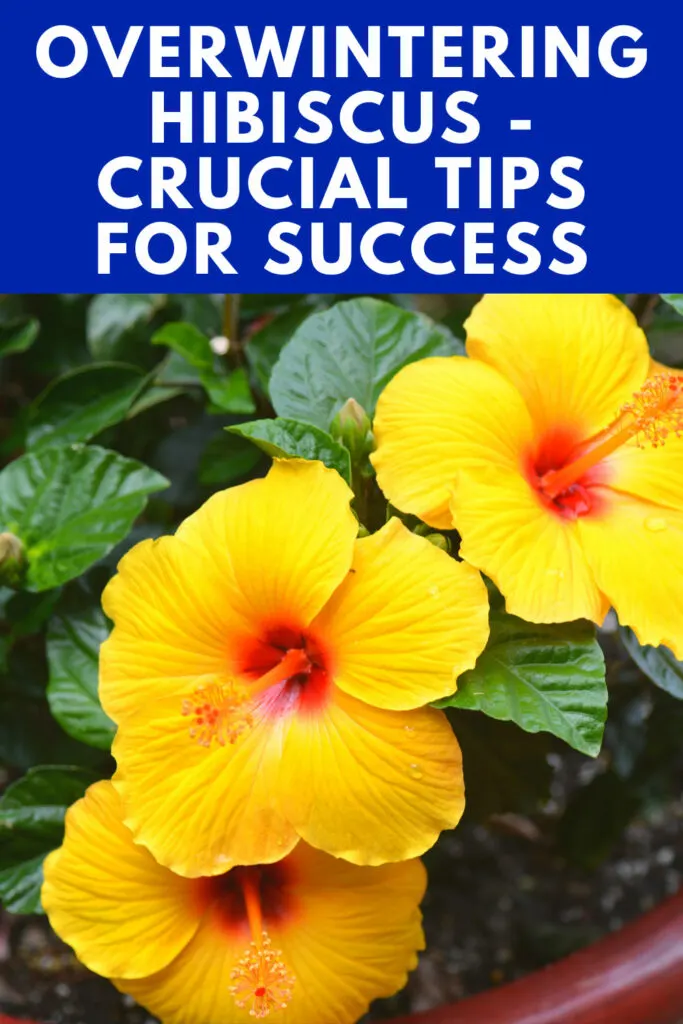
The two main options that you have in overwintering hibiscus are the following:
- Allowing your plant to go dormant and then reviving it in the spring
- Keeping your plant in active growth
From personal experience, I will say that I strongly recommend the second option. If you let your plant go dormant completely, it will take far too long to bring it back to life and bloom.
One year, when I tried that, my hibiscus didn’t bloom again until August, so it missed much of the summer. I’ll focus this article on the second method, which I strongly recommended.
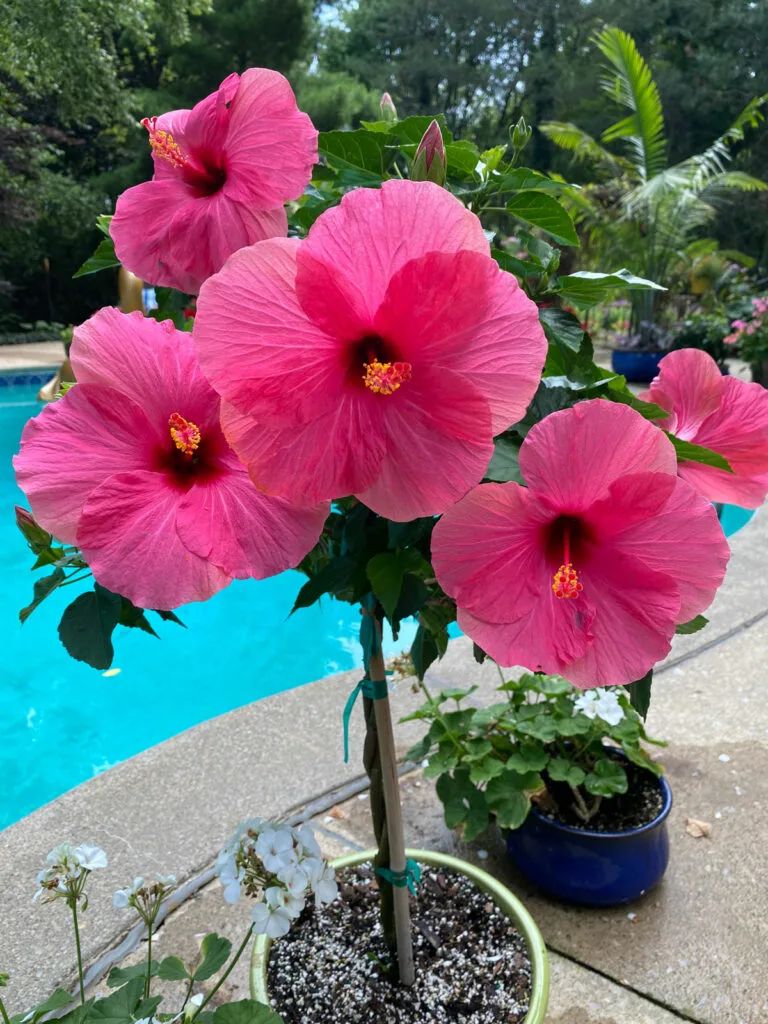
Table of Contents
OVERWINTERING HIBISCUS
Here is a 5 step process to prepare your tropical hibiscus for overwintering indoors.
1. PRUNE YOUR PLANT
A well grown hibiscus plant can grow quite larger over a single summer, and pruning your plant back will have many benefits:
- Allows your plant to fit indoors more easily.
- Creates a bushier plant.
- You’ll stimulate more flowering. Hibiscus grow flower buds right at the tip of each branch. By pruning your plant, you’ll stimulate more branching, and this will result in a lot more flowers on your plant.
For hibiscus growing in pots outdoors that you’ll overwinter indoors, pruning will be the first step of the process. Do this before the minimum temperatures outdoors get consistently below 50°F (10°C).
Use a pair of clean, sterilized pruners and prune about 1/3 of your plant back and up to about 50% or so. Do this on each branch.
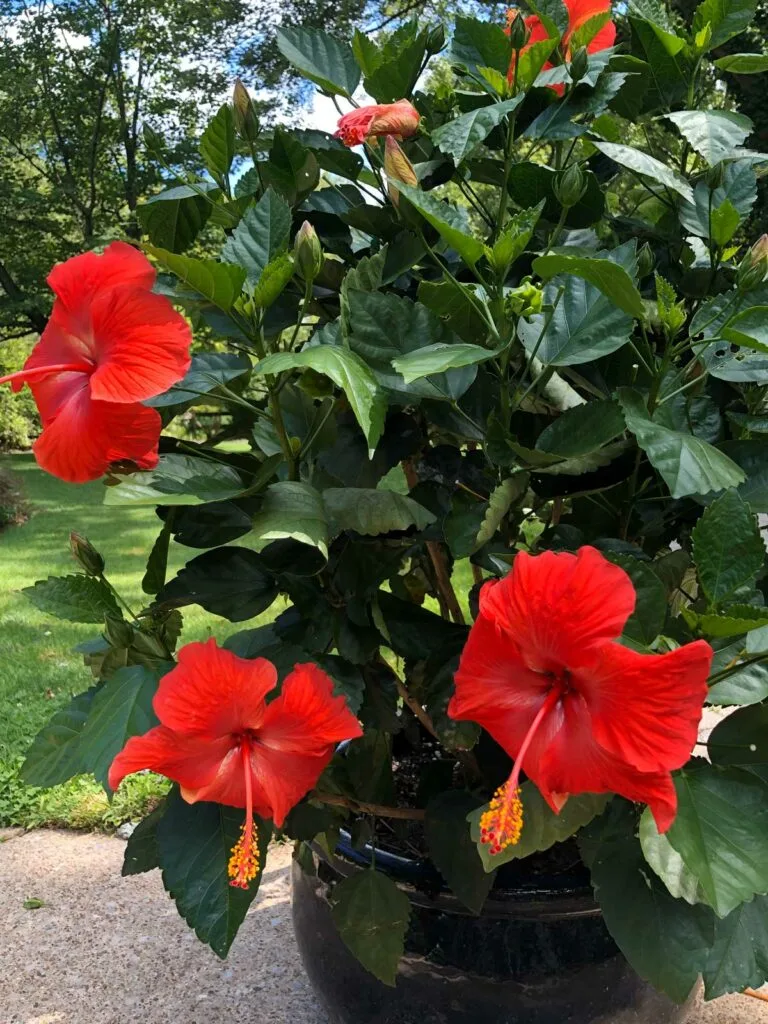
2. INSPECT AND TREAT FOR PESTS
After you’ve pruned, you’ll need to prepare your hibiscus so you’re not bringing in any pests into your home.
First, rinse your hibiscus plants off with water to knock off any pests (particularly spider mites!). You can use a hose with a shower attachment. Rinse off the entire plant, and try and get the undersides of the foliage as well.
Do this a couple times per week for a couple weeks before you bring your plants indoors to overwinter them.
If you do notice any of the characteristic spider mite webbing, keep spraying with water as best as you can.
Lastly, apply horticultural oil to the entire plant, allow it to dry, and then move your plant inside.
Be sure to cover all leaf surfaces including the undersides of the leaves, stems, etc.
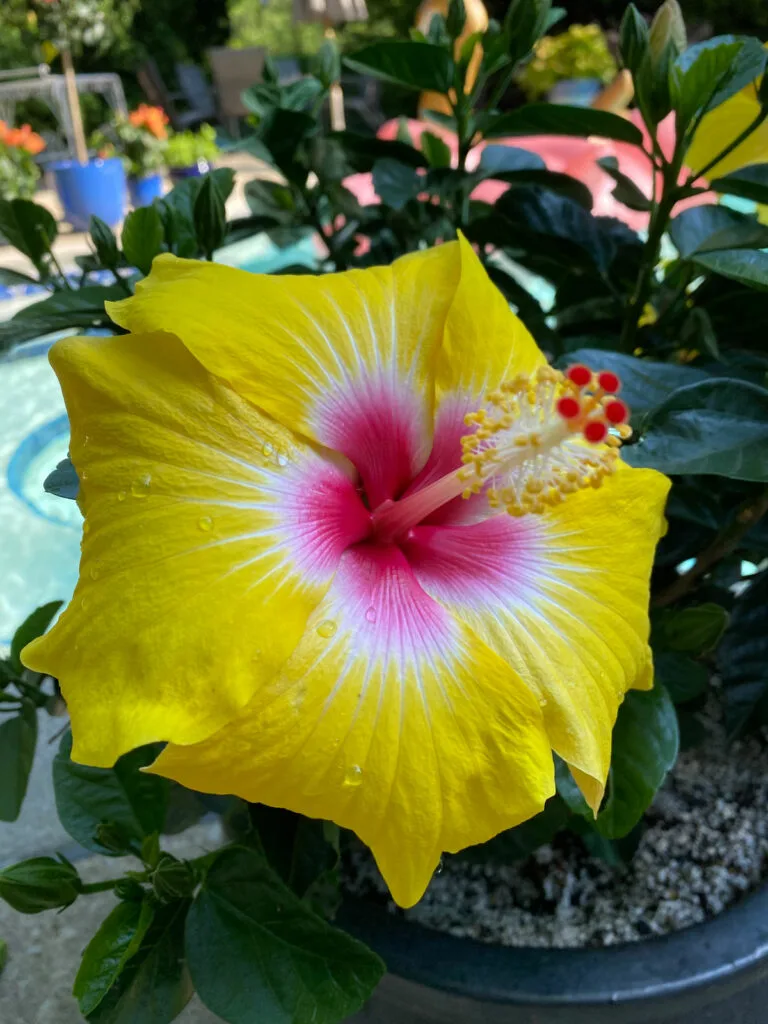
3. FERTILIZE
Typically, for other plants indoors, I will stop fertilizing during the winter months if the plant isn’t actively growing.
For hibiscus, it is important to not let them slow down too much, otherwise it will delay blooming the following year.
An amazing fertilizer to use for hibiscus is the Hidden Valley Hibiscus special blend fertilizer. It’s heavy on potassium, which hibiscus love. You will notice a big difference in the vigor and blooming of your plants with this fertilizer.
You can use this fertilizer year round. Use as directed on the label for best results.
In the winter time, fertilize less frequently than you would during the summer outdoors, but you should still fertilize.
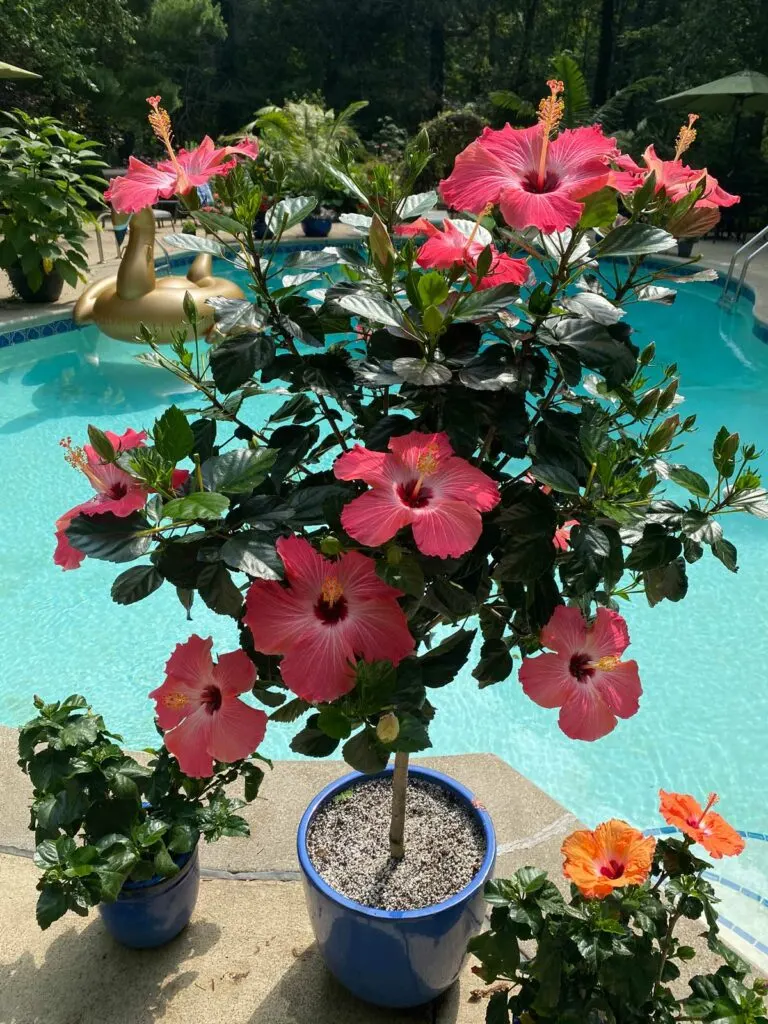
4. MOVE INDOORS
Situate your hibiscus immediately in front of the sunniest window that you have.
Keep in mind that any location that you have indoors (including your sunniest window) will not be providing nearly as much light as a location in full sun outside.
The intensity of light indoors, just by virtue of light going through our windows (and only coming from one direction), is much less than outdoors, so for sun-loving plants like hibiscus, it will be best to place it in the sunniest window you have.
Don’t be surprised if you get some yellowing of leaves after you move your plants indoors. This is perfectly normal and it’s simply your plant shedding some leaves as it adjusts to lower light levels indoors.
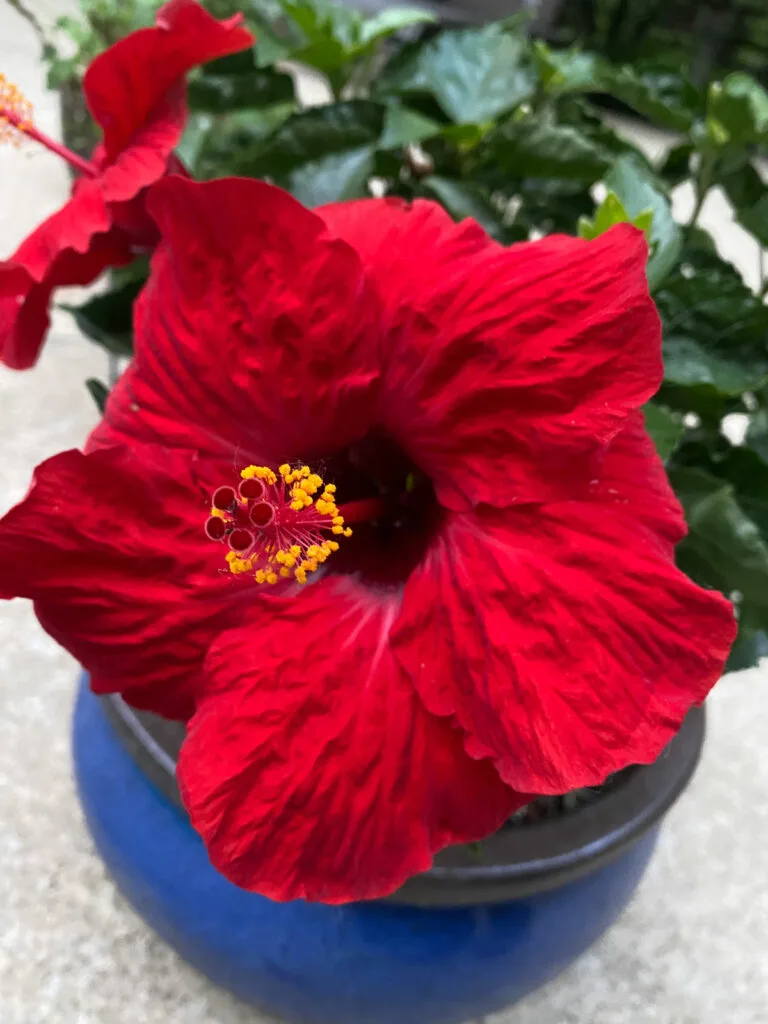
Never allow the potting mix to go completely dry. Let the top inch or two of the potting mix dry out, and then water thoroughly.
5. RETURNING YOUR HIBISCUS OUTDOORS IN SPRING
When temperatures are warming up again in the Spring, don’t be tempted to simply move your hibiscus out into full sun immediately or all your hard work will go to waste.
As I mentioned, the light intensity indoors is much less than it is outside, so you must allow your hibiscus plant to acclimate slowly when you place it back outside otherwise it will quickly scorch. How can you do this?
When you move your hibiscus from indoors to outdoors when minimum temperatures are consistently 50°F (10°C) at night, move your plant into FULL SHADE at first and leave it there for about 7-10 days.
Then, and only then, start to introduce some direct sun a little at a time (starting with morning sun only since it is gentler). Increase any direct sun a little each day over the period of another week or so.
Just keep an eye on your plant to make sure there is no sun scorch. You can’t acclimate too slowly, but you can acclimate too quickly. If you noticed any whitish, bleached out areas on the top of your leaves, you haven’t acclimated your plant slowly enough to direct sun.
I hope you’ve enjoyed this post on overwintering hibiscus. Have you overwintered hibiscus before? What has your experience been? Comment below. I’d love to hear!


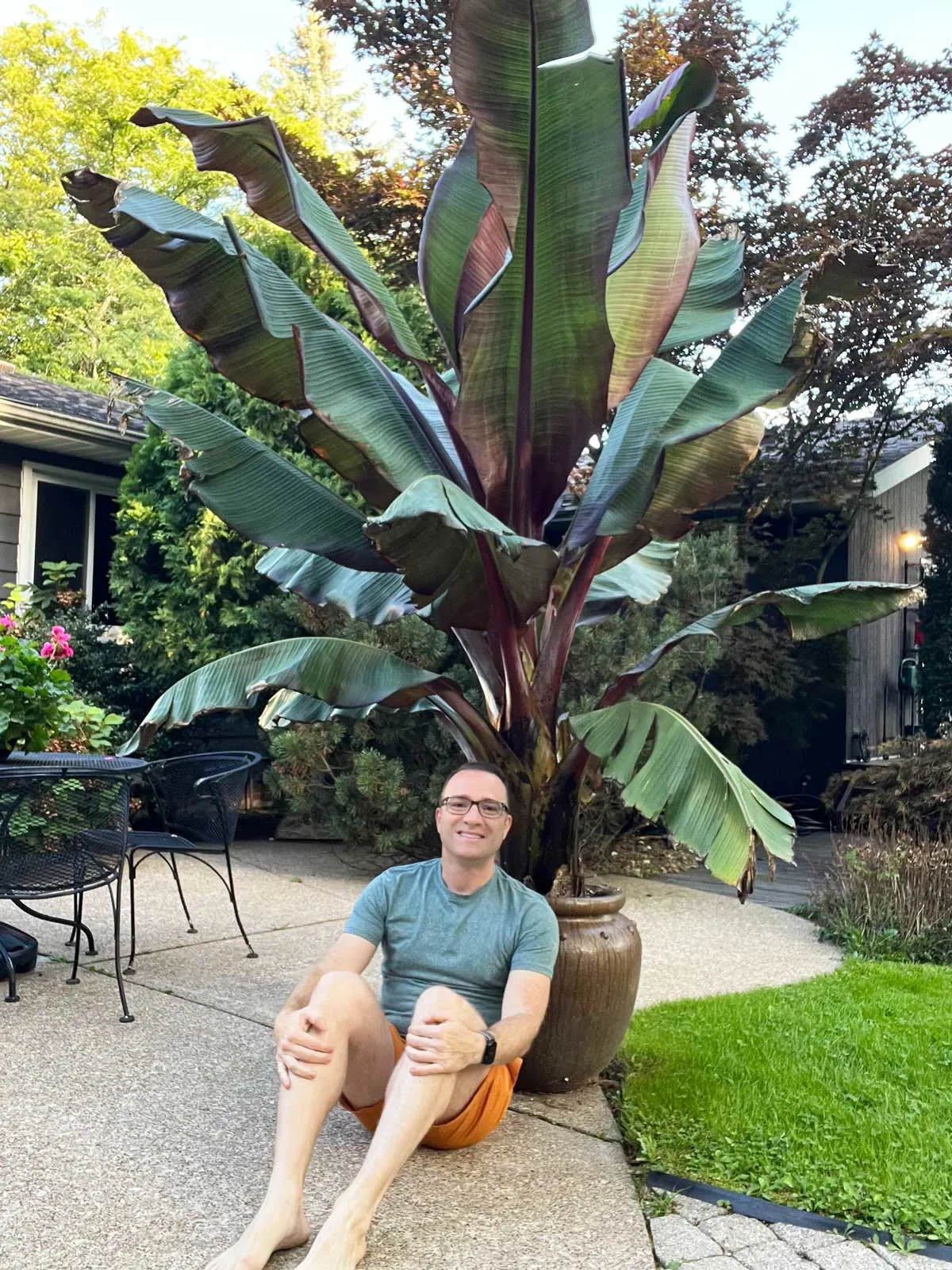
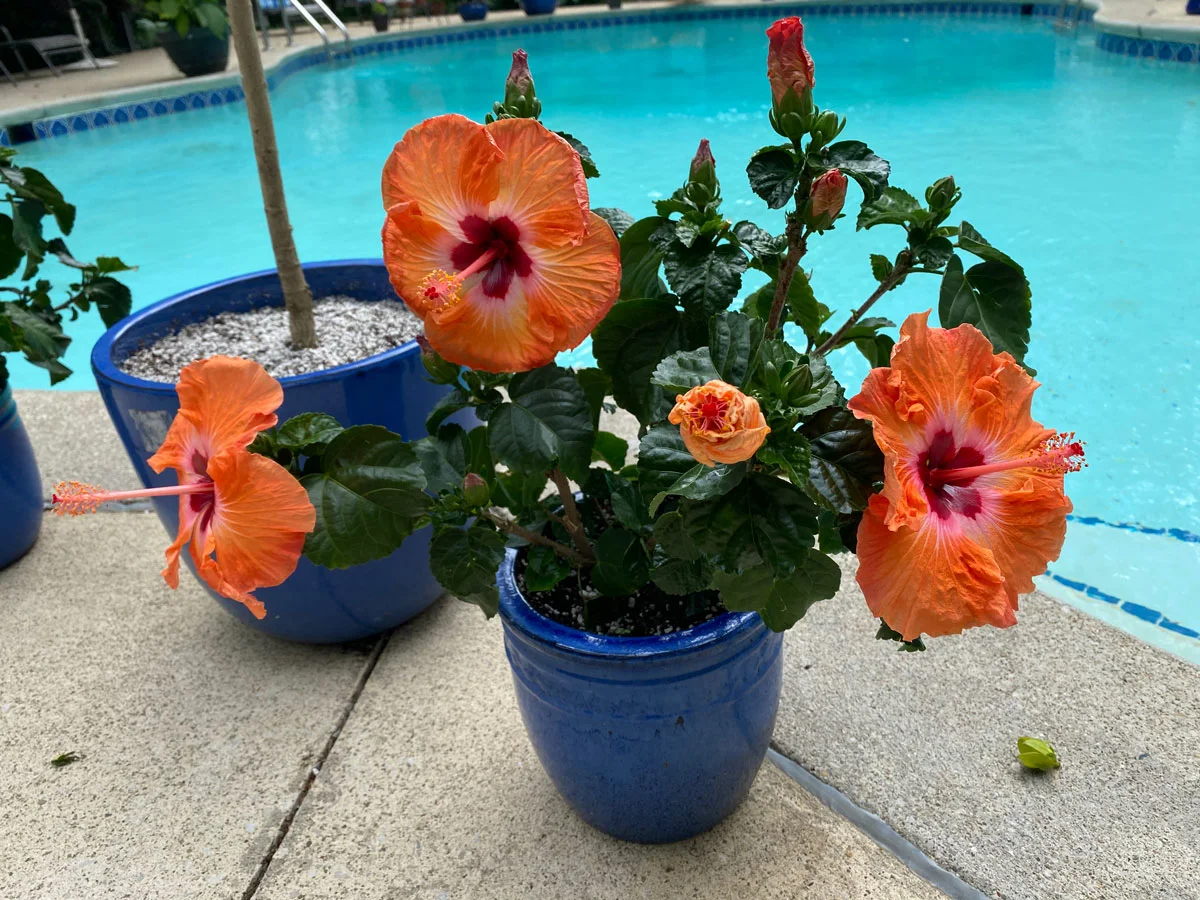
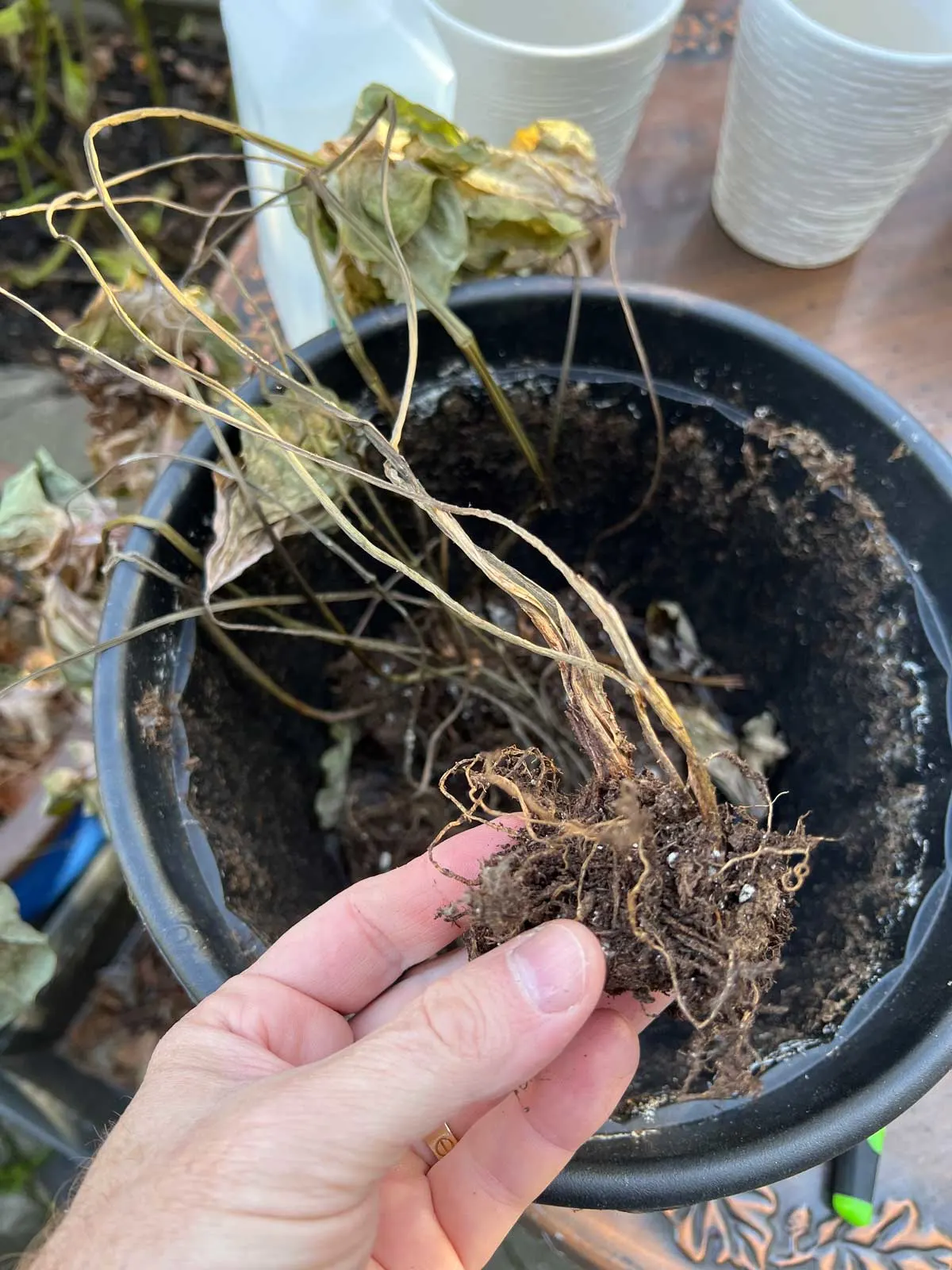
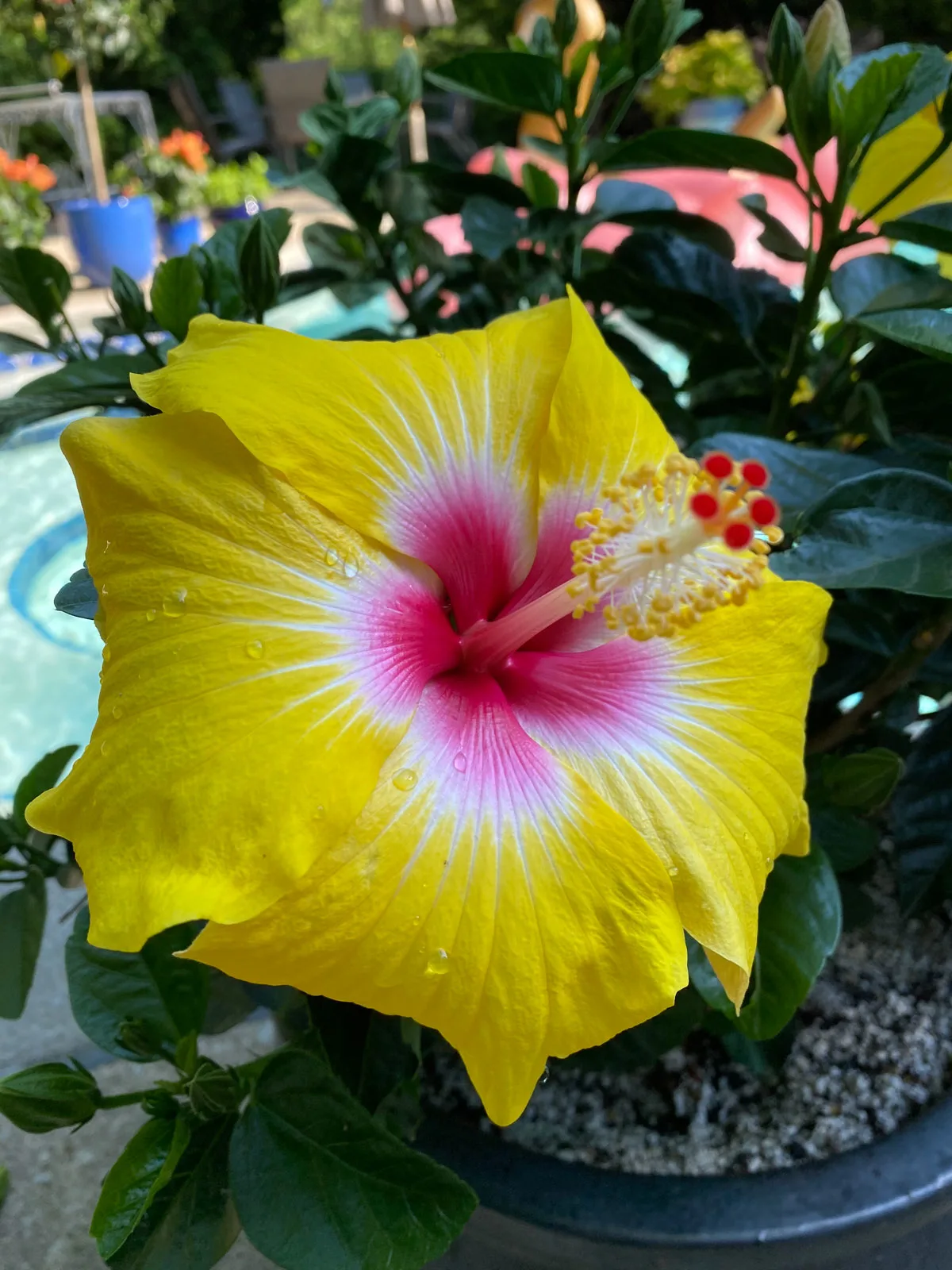
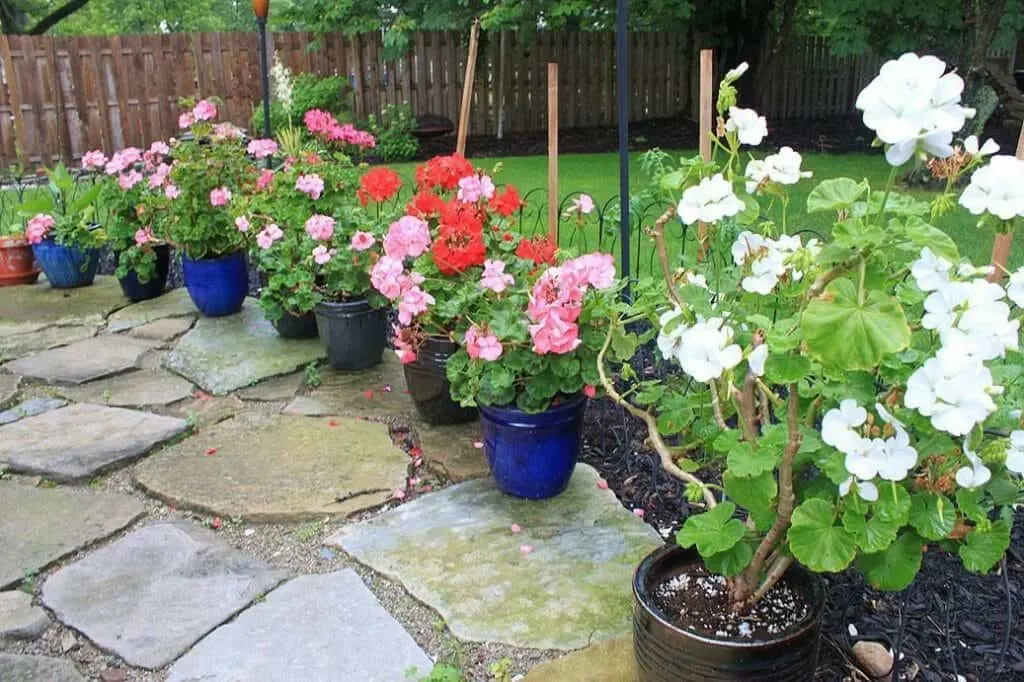
Amber Falk
Monday 22nd of January 2024
Hello, I've been taking your advice which helped revived my nearly dead hibiscus tree and it finally started to grow back leaves and bloom again after literally years. I was so happy, so thank you! However, a couple months ago, I moved it from a east facing window to my only south facing window for the winter. It was happy here until the past week or so when, without me doing anything different, the leaves are not happy. All the leaves are wilted so I water and the leaves revive a bit (but not a lot), but then TONS of leaves turn splotchy yellow and then will eventually turn all the way yellow. I do have some knats which I've tried to treat with hydrogen peroxide as instructed by a different plant guy but maybe I shouldn't have...? Leaves do also have tiny white specs all over them, kinda like sheetrock dust, which I was thinking was maybe from the humidifier I put in the room with my tree, but not sure what that dust is. I don't see webs from spider mites. Not sure what to do. Advice? I'm happy to send pictures if needed. Not sure if I've over fertilized, over watered...? Please help!
Thank you!
Raffaele
Thursday 25th of January 2024
Hi Amber! Send me some photos. I will email you and you can respond back with photos. One thing that I can think of off hand from your description, is if you moved your plant to a brighter window, this means that it will dry out more quickly, and you'll have to adjust your watering and make it more frequent.
Debra
Saturday 13th of January 2024
Hi Bob,
May I add grow lamps to my hibiscus tree during the winter?
Raffaele
Saturday 13th of January 2024
Yes of course! You can use grow lights for any plant.
Mark Badach
Tuesday 26th of December 2023
Thank you! You offered the best information I’ve seen so far regarding the seasonal management of our Hibiscus plant.
Raffaele
Thursday 28th of December 2023
So glad that you enjoyed the post Mark!
Dorothy
Friday 1st of December 2023
Hi, I have several hibiscus plants even when I lived in Georgia, now I live in Texas when we had the bad weather in year 2020 I was scared that was it , my plants had ice on them for that time so I just waited and let me tell you that summer until now my plants are beautiful I had cut them back and fertilizer them before that weather . I say leave them along just fertilizer cut back and let them grow. I even had man in neighbor hood come ask me what kind tree are those ? my answer these are not trees and don’t look like trees you right they are plants they sure are beautiful now this was this year., and Texas have worse soil so have to work with soil. Good Luck Dot
Raffaele
Saturday 2nd of December 2023
I'm glad that the plants rebounded for you Dorothy!
Stepanie
Friday 1st of December 2023
I live in NE AL. I planted mine in my flower bed & it was spectacular. Tripled in size and exceeded my expectation. Before the frost, I cut it back & covered it with a tall 5 gal pail. What do you think I'll find in the spring?
Raffaele
Saturday 2nd of December 2023
I assume we're still talking about tropical hibiscus? How cold does it get where you are? Minimum temperature.